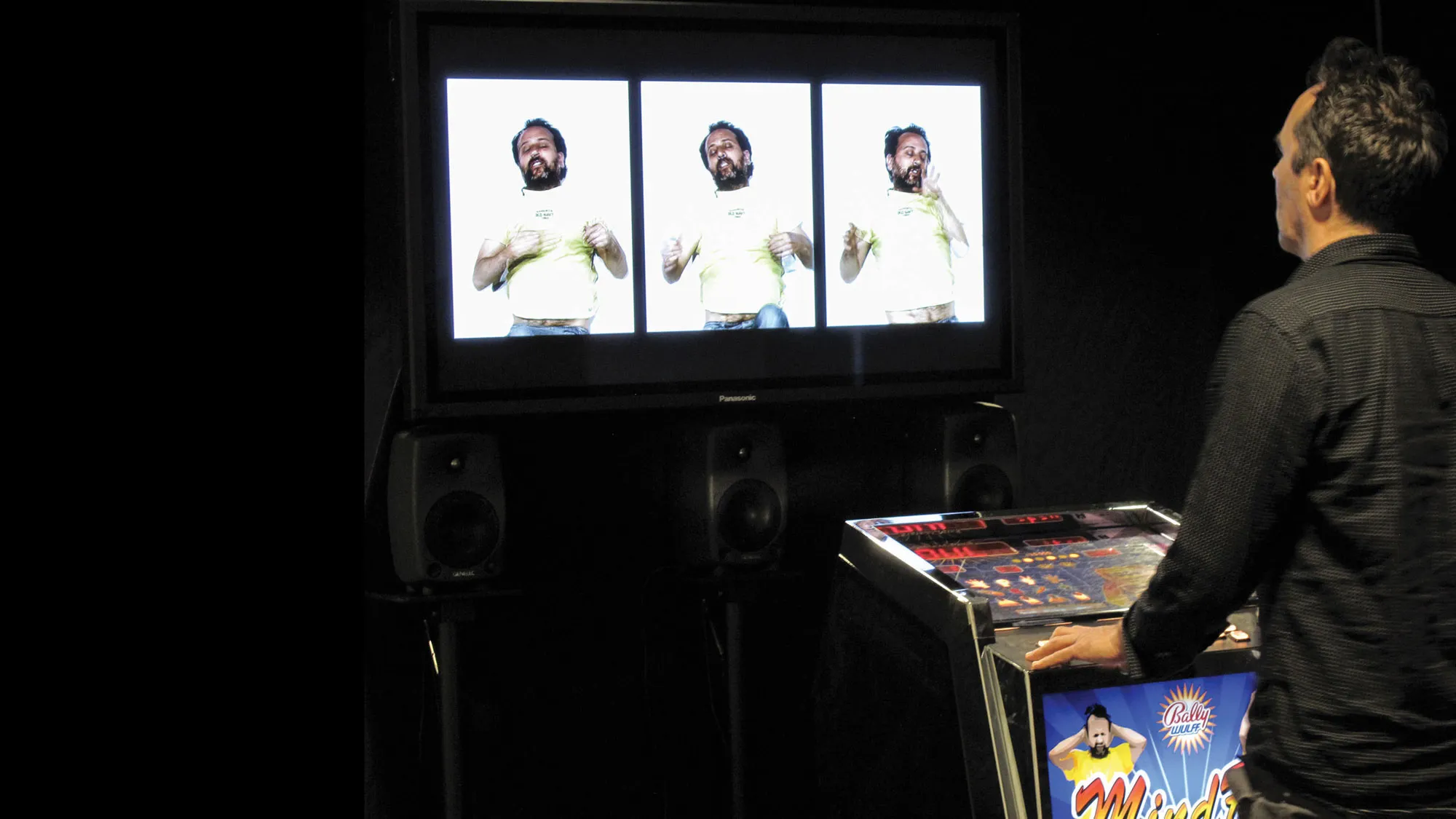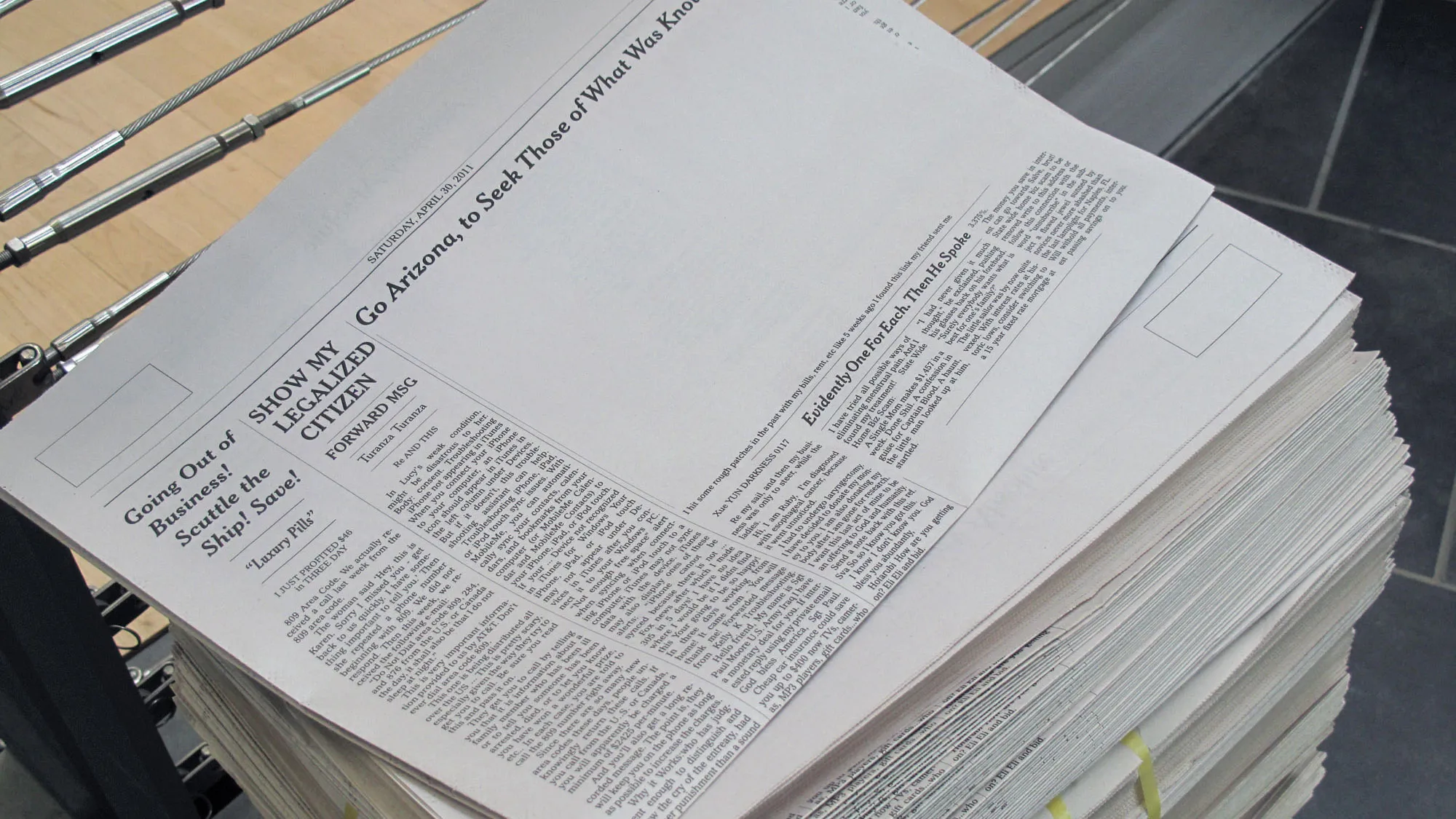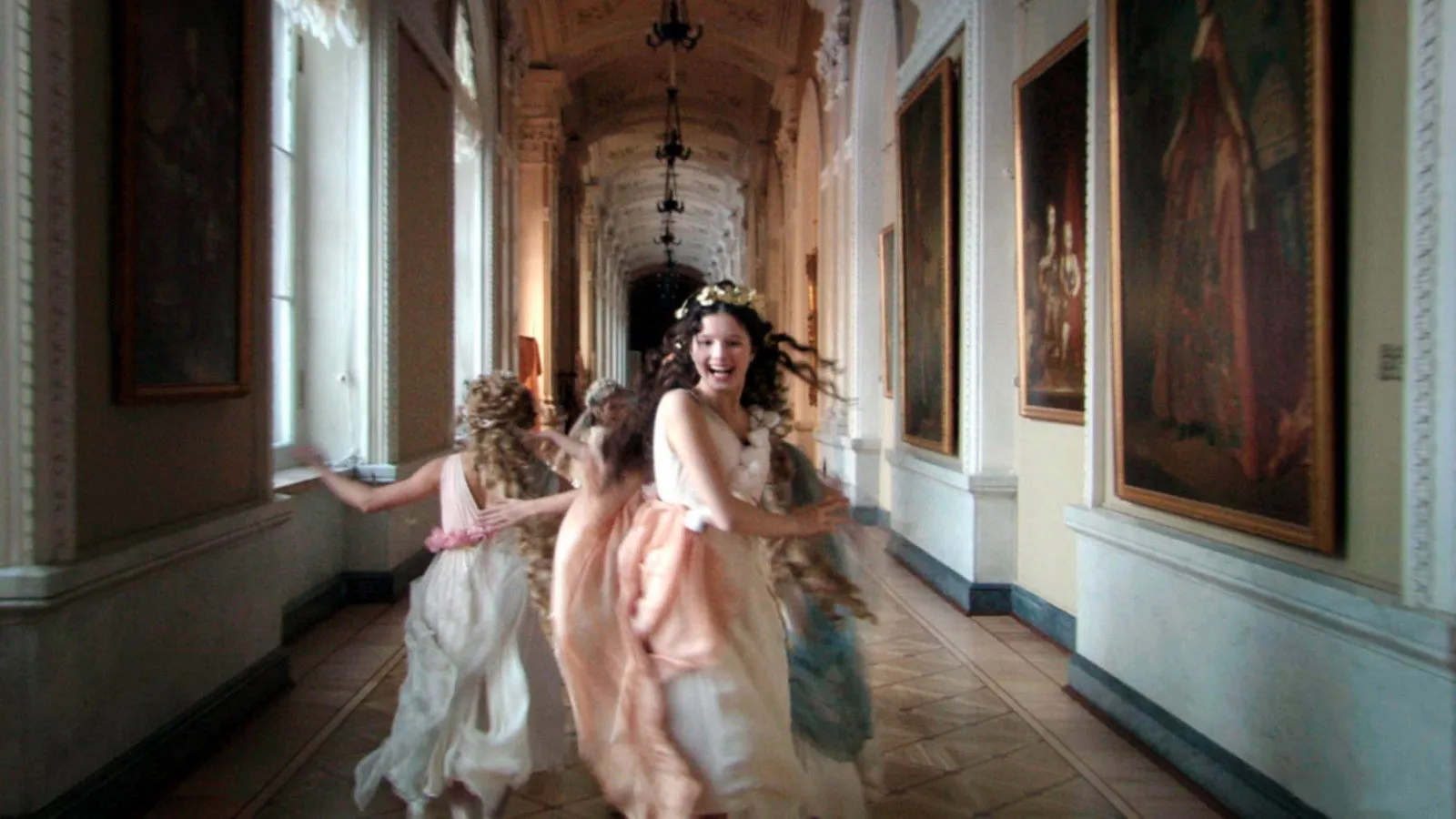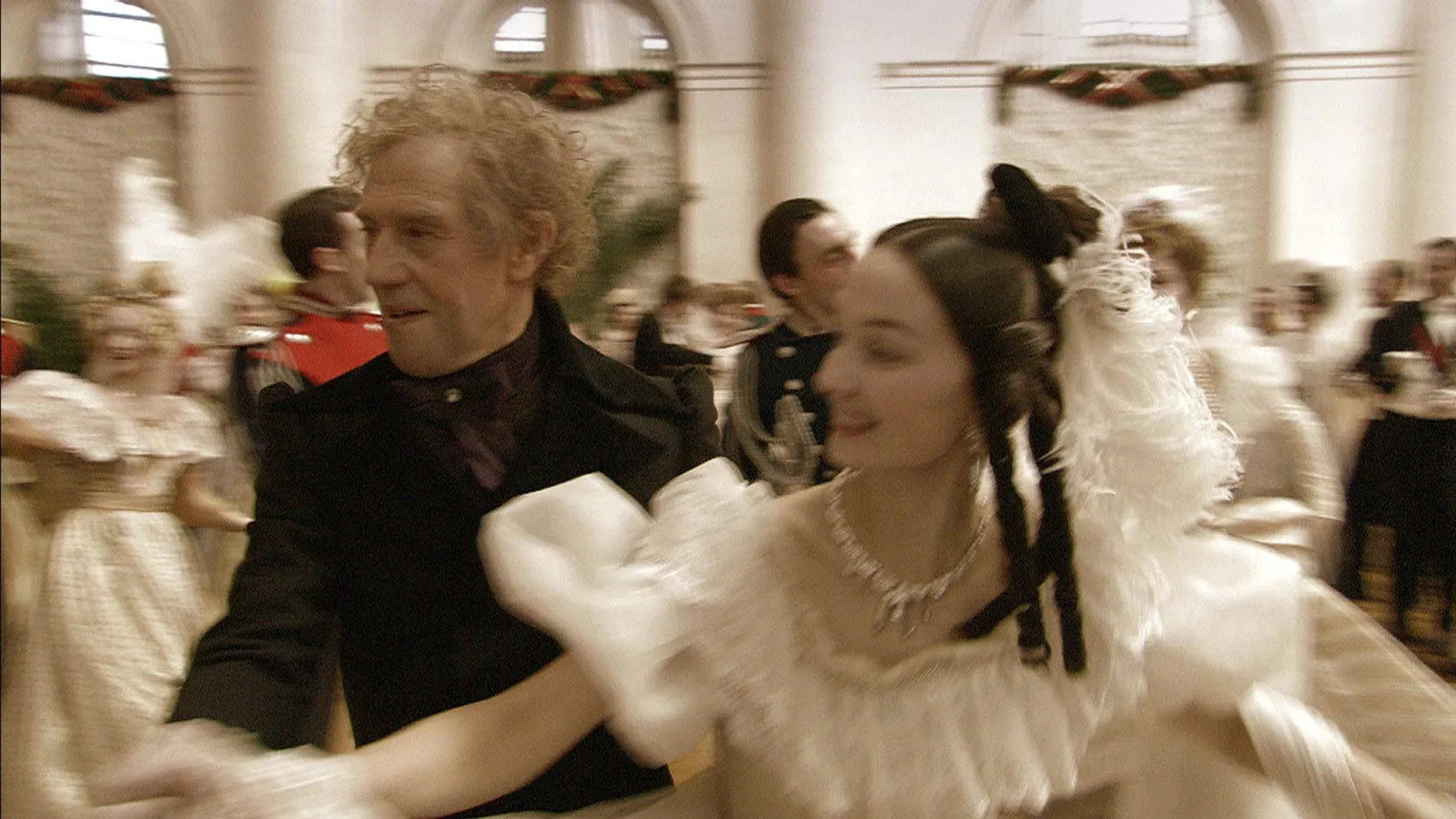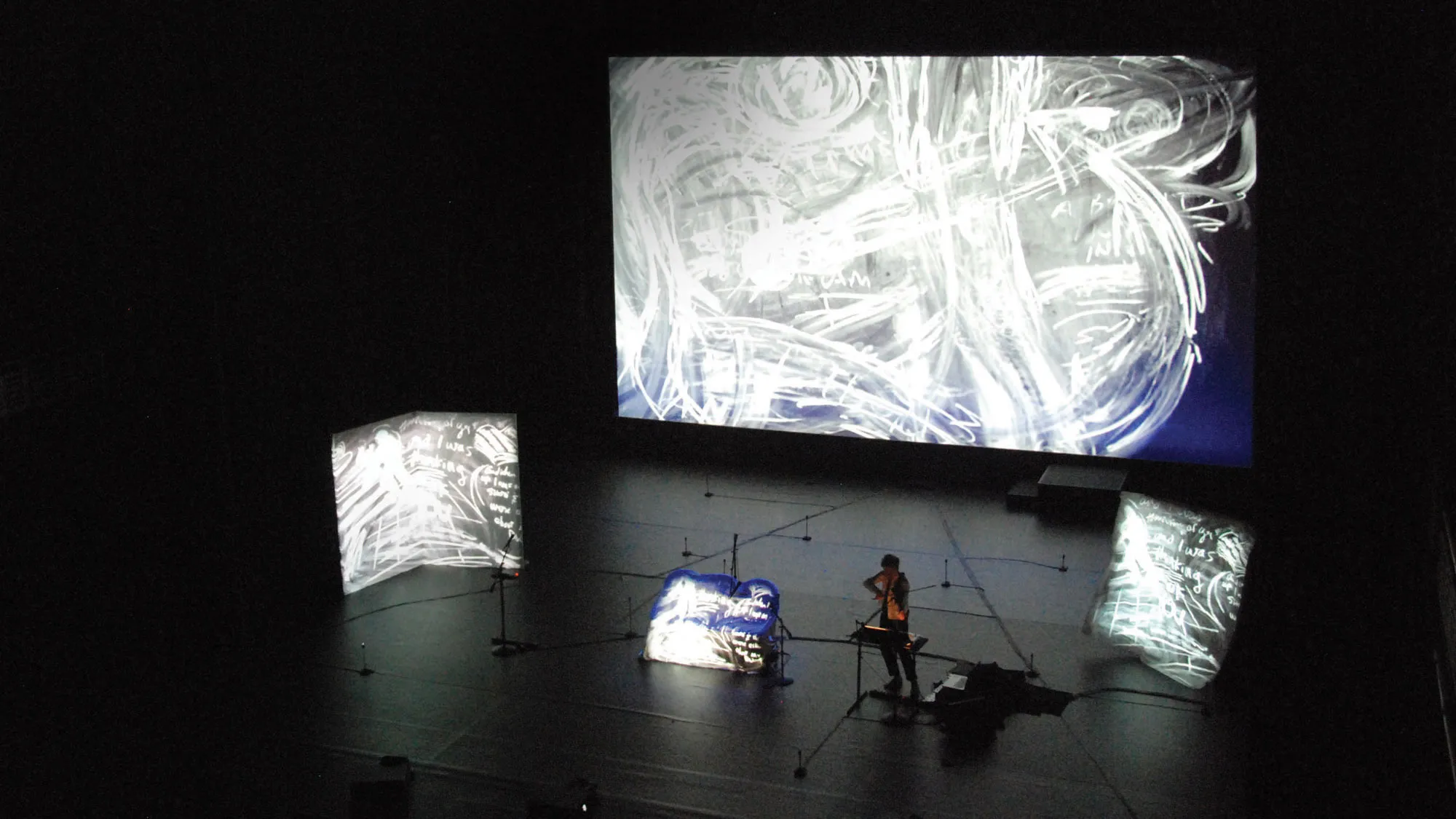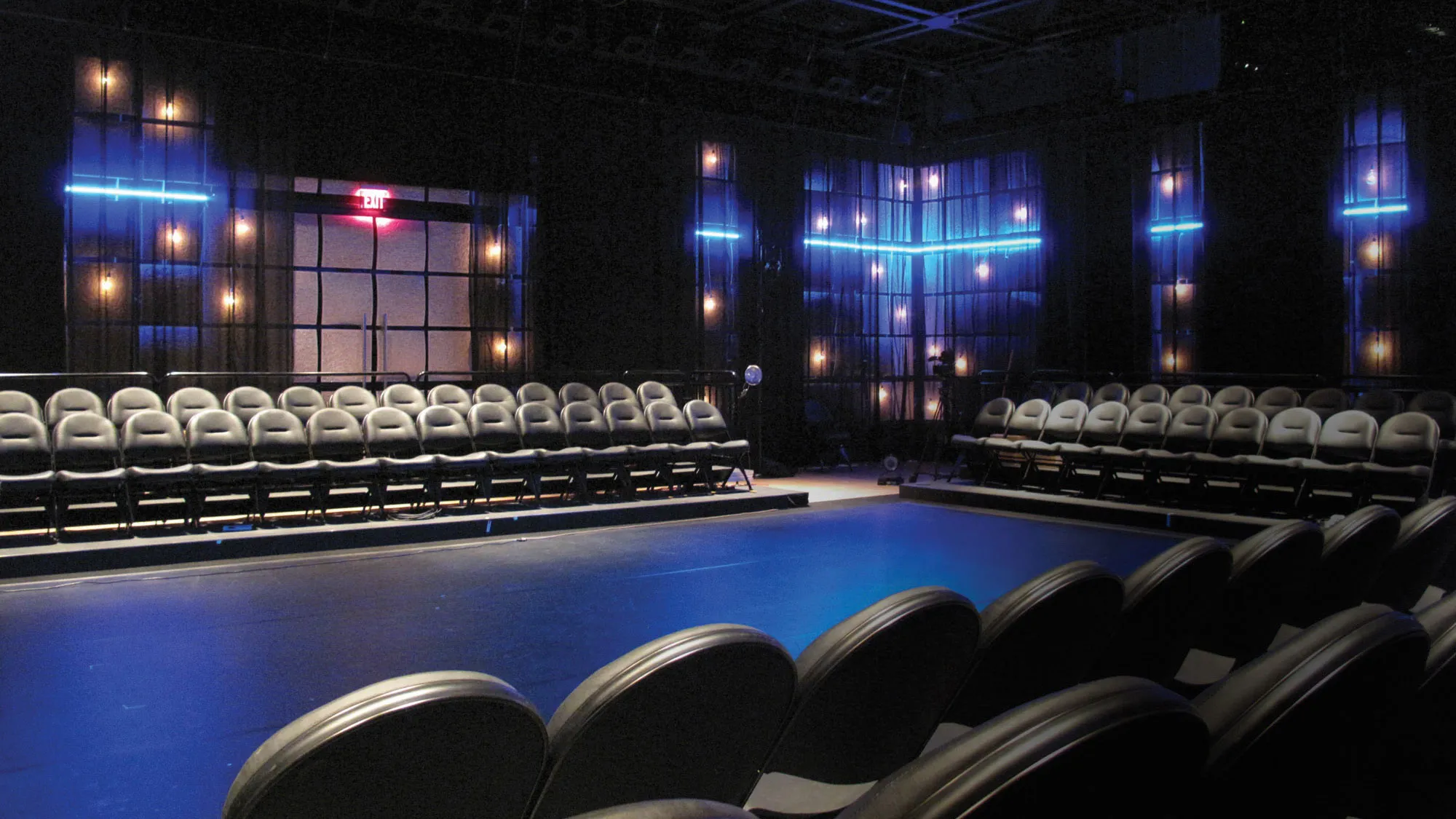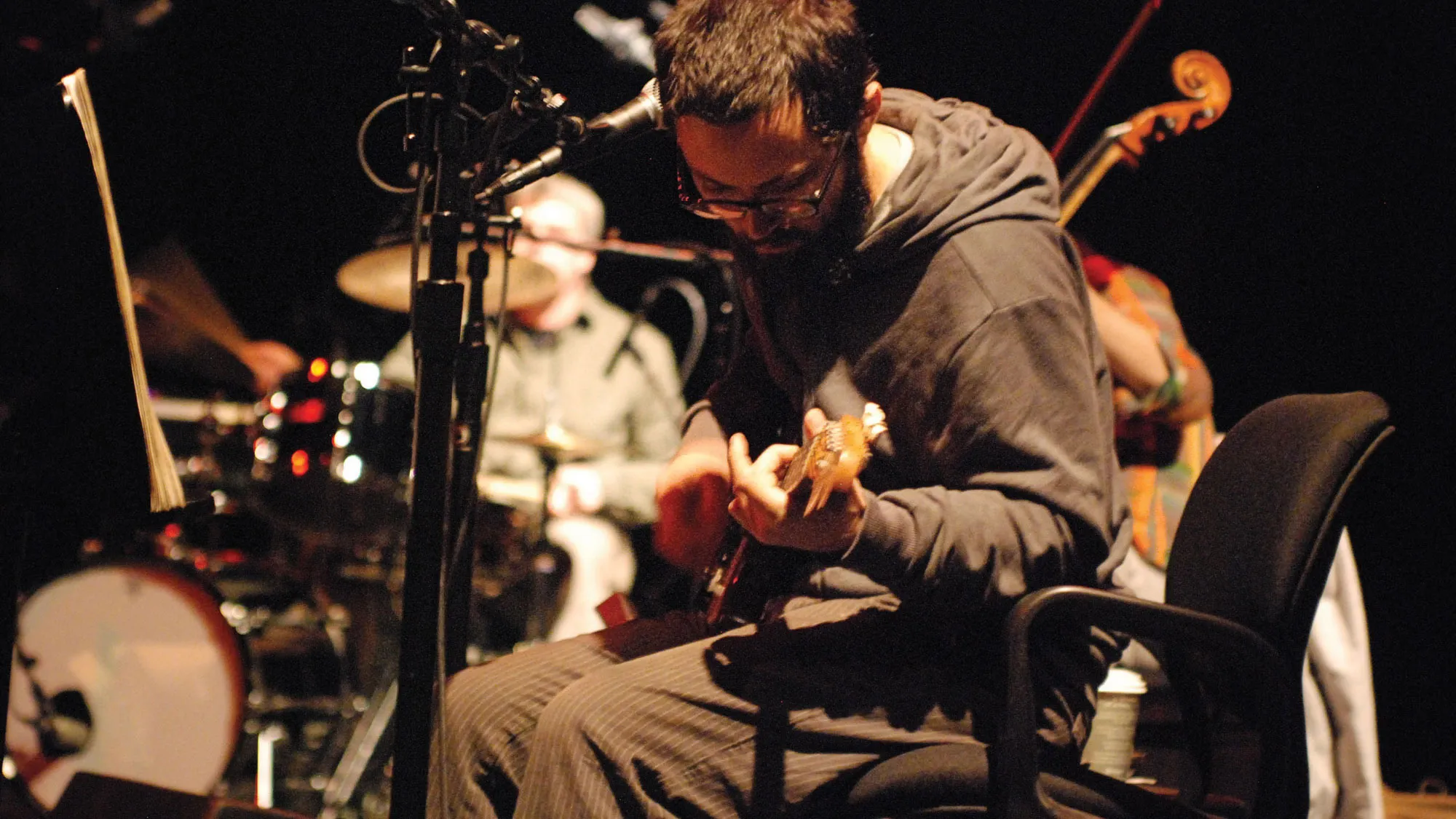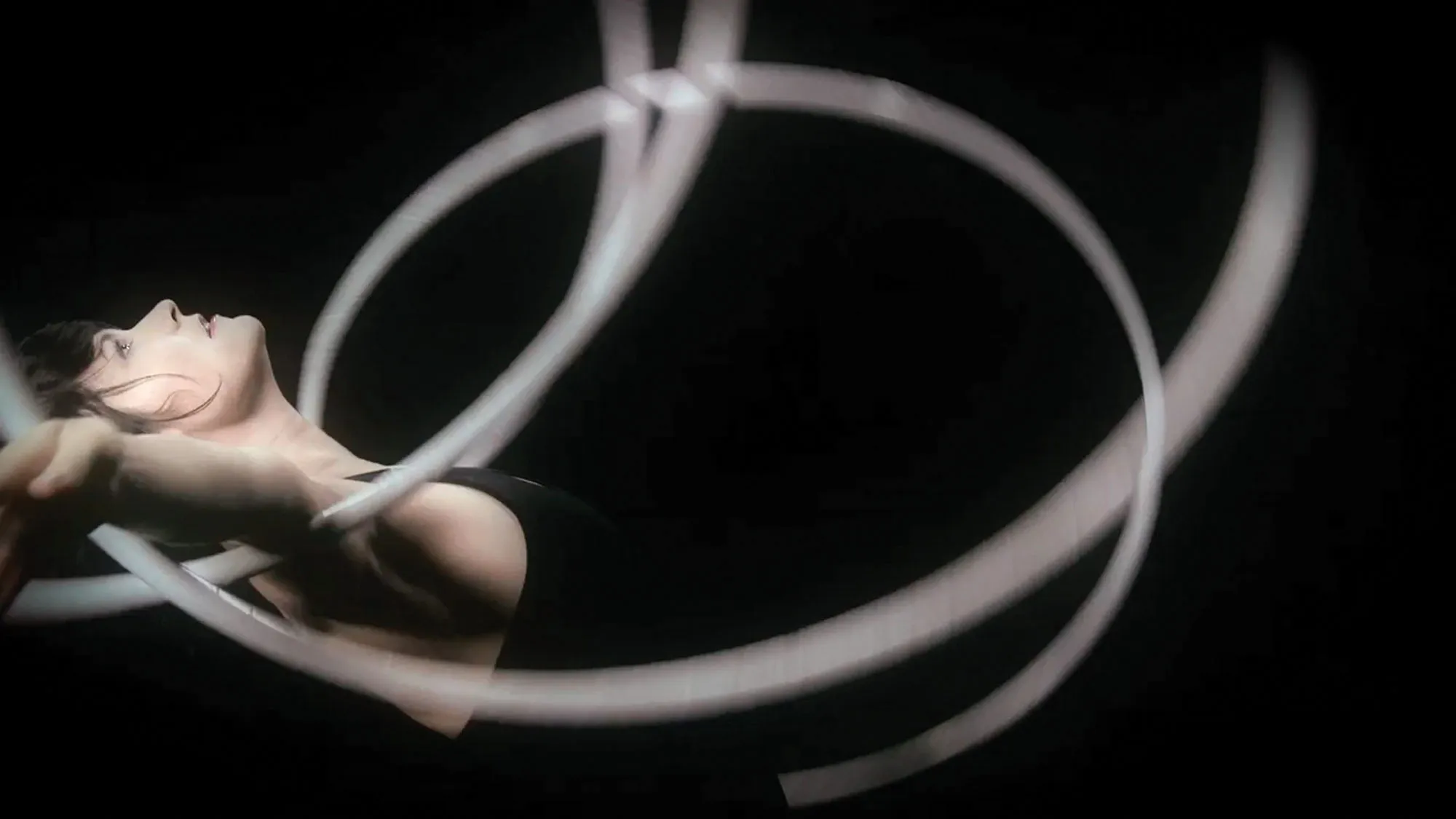Live Shorts is a series of performances for the stage commissioned for Filament. Invited artists were asked to create a performance for a specific period of time under 20 minutes that made use of the following constraints: a 20’ x 30’ stage, with the possibility of using only one screen, one projector, and a sound system. Standing in contrast to EMPAC’s typical embrace of flexibility and open-ended possibility, these create a platform for working within a specific structure. The result is a varied and vigorous set of short works created by a range of artists, from performers in the worlds of contemporary theater and dance, to experimental and electronic musicians, to visual artists whose work is typically exhibited in museums and galleries, all sharing the same stage and set of technical parameters. The interstitial space between performances is activated by dynamic lighting design by Wingspace Theatrical Design.
ST2A
Act Curtain — Like the grand drapes of the great old theater houses, this installation transfers the audience's attention from the performance area to the auditorium during the interstitial moments between performances. Using the medium of light, it animates the whole of the theater architecture through both space and time. ACT CURTAIN was conceived and installed by Scott Bolman, Zane Pihlstrom and Lee Savage of Wingspace Theatrical Design. Wingspace is a Brooklyn-based collective of artists, designers, writers, and thinkers committed to the practice of collaboration in theatrical design. Wingspace has created lighting environments for numerous projects at the Old American Can Factory, including the 2009 Beaux-Arts Ball for the Architecture League of New York. Wingspace members have collaborated with artists such as Robert Wilson, Isaac Mizrahi, the Kronos Quartet, Shen Wei Dance Arts and the Grammy-nominated Lila Downs. Their work has been appeared at the Roundabout, the Public Theater, Lincoln Center, the Brooklyn Academy of Music, the Alliance Theater, Baltimore Centerstage, the Old Globe, the Shakespeare Theater and the Guggenheim Museum as well as internationally at venues in Canada, Ireland, Germany, Lithuania, the Netherlands and South Korea. In addition to creating dynamic work of their own, Wingspace co-produces a salon series with XO Projects. Each salon brings featured artists together with the broader performance community for open-ended discussions of vital issues in contemporary theatrical design.
ST2B
Sheepspace (SUE-C & Laetitia Sonami) — Sheepspace is a live film inspired by the writings of Haruki Murakami. Adapted from the Sheep Man character in Dance, Dance, Dance and The Wild Sheep Chase, the film is brought to life through the manipulation and projection of photographs, drawings, scale models and various three dimensional objects, along with the processing and amplification of electronic music, nostalgic songs, and field recordings. The artists draw from their palette of a suitcase-sized animation booth, miniature televisions, a train-propelled camera, motors, sensors, flash bulbs, and talking lamps to blur the boundaries of the real world and the cinema world. It is up to the audience to determine where dreams end and reality begins.
Intervention #2 (Created by Wally Cardona + a local expert) — Each Intervention is the meeting of Wally Cardona and a local specialized expert. Through their intimate encounter, they generate a new version of Cardona’s “empty solo,” designed to make itself completely available to an outside eye or opinion. The re-conceived solo is performed as a new entity. Intervention is a game leading to other games of meaning, intent, and form that can create multiple interpretations of “a dance.” It is also the first stage of development for Tool Is Loot, a collaboration between Cardona and Paris-based choreographer Jennifer Lacey.
You Don’t Know What You're Talking About (MTAA) — Internet artists M.River and T.Whid (MTAA), like you, have often wished while listening to a lecture, speech, or newscast to stand up and tell the speaker, "You don't know what you're talking about." MTAA, sitting behind a desk with two laptops and two microphones, and with a projection screen behind them that displays a timer and the text “#mtaa,” will invite the audience to start twittering. For the duration of the performance, they will read any and all texts sent to Twitter with the hash tag "#mtaa."
ST2C
A Narrow Vehicle (Trouble) — Performers acting like ushers and doubling as shaman enact a cleansing ritual on the audience, which becomes a screen for projections of familiar spiritual imagery and the five elemental lights. Culminating in a performance of trance R&B saxophone meandering, a narrow vehicle brings up a promise — made by universities, militant groups, spiritual organizations, and pop culture. The promise is of freedom and self-actualization via transmutation of defiled elements, and we locate this process in (or on) each audience member. Imparting the message evokes a claustrophobic, aggressive style, but the promise is kept.
Another Circle (Jen DeNike) — Using video, performance, and sound as live ritual magic, a series of circles transforms the space into a vessel for scrying, an act of obtaining spiritual visions by peering into a reflective surface. In DeNike's video a prima ballerina in classical tutu and toe shoes performs what appears to be an infinite pirouette. The ballerina's circular movement becomes the pendulum for scrying. A live ballerina (Lucy Van Cleef) will perform abstract choreographed movements in reaction to and mirroring the video in collaboration with Rose Kallal who will perform an improvised sound accompaniment using a combination of vintage analog synth, guitar, and tape delay; her dark ambient sonic drone providing a complementary yet contrasting circular soundtrack.
AMAZINGLAND IN TROY EMagicPAC (Steve Cuiffo, Trey Lyford and Geoff Sobelle) — Amazingland is the second in a trilogy of theater pieces that embrace and subvert American popular entertainment. The piece is about illusion, delusion, and the role of deception in American culture. Cuiffo, Lyford, and Sobelle will enter magic contests as their illusionist personas, Louie Magic, Dennis Diamond, and Daryl Hannah, and, succeed or fail, create faux-documentary video to be integrated into performance. Their goal is to expose the pathos behind the gloss of popular Vegas-style illusion shows — and also to blow your mind out of the back of your skull with some incredible magic.

